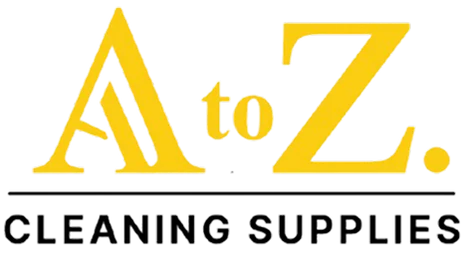Nobody plans for accidents, but they happen in every home. As a renter, every spill threatens your security deposit and brings stress about potential damage charges. The difference between losing money and keeping your deposit often comes down to knowing how to deal with common household strains.
Quick response makes the most significant difference in stain removal success. While some accidents seem impossible to remove, most common household stains disappear completely with immediate attention, with the right approach and a few household stain removers you probably already own.
Here are seven common household strains that every renter should be aware of.
Wine and Alcohol Spills
Red wine and alcohol spills penetrate deep into fibers quickly, creating stubborn stains that worsen over time. These liquid stains spread rapidly but respond well to immediate absorption and acid-based treatments when caught early.
- Blot with clean towels—don’t rub.
- Mix 3 parts cold water and 1 part vinegar. Pour and blot until clean.
- For dried spots, apply a paste of baking soda and water, wait two hours, and vacuum.
These are among the most feared common household stains, but early care makes them manageable.
Coffee and Dark Beverage Accidents
Coffee, tea, and dark sodas leave brown household stains that set quickly if not treated. These protein-based stains set permanently with heat but dissolve effectively with cold water and acidic solutions.
- Rinse immediately with cold water—never hot, especially with cream-based drinks.
- Mix 2 tbsp vinegar with 1 cup cool water and apply for 5 minutes.
- For dairy-based stains, add clear dish detergent to cold water.
With this approach, these household stains set quickly.
Grease and Cooking Oil Disasters
Kitchen grease stains are hard to avoid and even harder to clean. These oily messes don’t mix with water, so scrubbing just spreads them. You need to absorb the grease first, then break it down using dish soap or other common household stain removers.
- Cover fresh oil with cornstarch, baking soda, or baby powder.
- Wait 15 minutes for full absorption.
- Vacuum powder, then apply dish detergent.
- Rinse with warm water after 10 minutes.
Blood Stain Emergencies
Blood contains proteins that coagulate and set permanently when exposed to heat, making cold water treatment essential. Fresh blood lifts easily with cold water, while dried blood requires enzyme treatment to break down proteins.
- Rinse fresh blood with cold water—never hot.
- Rub gently or apply ice cubes for 5+ minutes.
- For dried stains, use unseasoned meat tenderiser + cold water.
- Wait 30 minutes, rinse thoroughly.
Ink and Marker Mishaps
Ink from pens or markers is one of the most feared common household stains. It seeps into fabric quickly and can spread with scrubbing. Solvents like rubbing alcohol are the most effective way to dissolve ink before it sets permanently.
- Dab rubbing alcohol on cotton balls and press against the stain.
- Work from edges inward to avoid spreading.
- Hand sanitiser or alcohol-based hairspray works in a pinch.
- Blot and repeat until clean.
Pet Urine Problems
Pet accidents create visible stains plus lingering ammonia odors that encourage repeat incidents in the same location. Incomplete treatment allows odor molecules to remain, making thorough neutralization essential for preventing future accidents.
- Blot up all moisture with towels.
- Mix equal parts white vinegar + water, apply for 15 minutes.
- Sprinkle baking soda over it and leave overnight.
- Vacuum and rinse the next day.
Pet Vomit Cleanup
Pet sickness creates biological contamination requiring careful handling to prevent health risks while eliminating stains and odors. Organic matter breaks down with salt water and enzyme treatments designed specifically for biological accidents.
Remove solid matter using disposable utensils while wearing gloves to prevent contamination spread—scoop rather than scrape to avoid pushing material deeper. Mix two tablespoons salt with one cup warm water, apply for five minutes, then blot gently. Use enzyme cleaners designed for pet accidents to completely eliminate organic matter and odor sources.
Check Our Blog: End of Lease Cleaning Checklist for Tenants in Sydney
Emergency Preparedness for Common Household Stains
Stock essential supplies for immediate stain response: white vinegar, baking soda, clear dish detergent, hydrogen peroxide, rubbing alcohol, and clean white towels. Keep supplies in main living areas rather than storage closets—easy access encourages immediate treatment when seconds count most. Document treatment efforts with before and after photos to demonstrate responsible tenant behavior and prevent unfair deposit deductions.
Why Renters Need Special Stain Knowledge
Living in someone else’s property creates unique pressure when accidents occur. Unlike homeowners who can replace damaged items gradually, renters face immediate financial consequences through deposit deductions and potential lease violations.
The Cost of Ignorance
Many renters pay hundreds of dollars for professional cleaning or replacement costs that simple home remedies could have prevented. Understanding basic stain science helps you respond appropriately, rather than panicking or making mistakes that worsen the situation.
Landlords appreciate tenants who promptly address and effectively resolve problems. Demonstrating responsible care for the property often leads to better relationships and more favorable lease renewals.
Building Your Emergency Kit
Stock these affordable supplies for instant stain response: white vinegar, baking soda, clear dish detergent, hydrogen peroxide, and clean white towels. These versatile ingredients can handle most household accidents without the need for expensive specialty products.
Keep supplies accessible in the main living areas, rather than storing them in closets. Easy access encourages immediate treatment when seconds count most.
Prevention and Emergency Response
Thoughtful preparation prevents many staining disasters while ensuring a quick response when accidents do occur. Building good habits effectively protects your rental property investment.
Protective Strategies
Area rugs and furniture covers provide washable barriers between accidents and expensive surfaces. Choose machine-washable protection that’s easy to clean or replace when needed.
Coasters, placemats, and table runners catch spills before they reach furniture surfaces. These simple barriers prevent most dining and entertaining accidents completely.
Response Planning
Keep stain treatment supplies in easily accessible locations rather than storage areas. Quick access encourages immediate treatment when timing matters most for successful stain removal.
Document your stain treatment efforts with before and after photos. This documentation demonstrates responsible tenant behavior to landlords and can prevent unfair deposit deductions.
Conclusion
These seven stain removal techniques protect your rental deposit while maintaining a clean, comfortable living environment. Success depends on quick action, proper techniques, and keeping basic supplies readily available.
Most household stains respond well to simple treatments using common ingredients. Understanding these methods gives you confidence to handle accidents calmly and effectively, turning potential disasters into minor inconveniences that won’t cost you money.
Frequently asked questions about common household stains
What are all stains permanently set by?
Stains permanently set when exposed to heat, like hot water or dryers, especially protein-based ones like blood or dairy.
What is the easiest stain to get out?
Fresh water-based stains like juice or mud are usually the easiest to remove with quick blotting and cold water.
What are the most common food stains?
Common food stains include tomato sauce, grease, coffee, wine, chocolate, mustard, and soy sauce.
Does vinegar remove stains?
Yes, white vinegar is effective on many stains like coffee, wine, and deodorant marks due to its natural acidity.
Can toothpaste remove stains?
Yes, non-gel white toothpaste can help remove ink, crayon, and scuff marks on some surfaces and fabrics.



